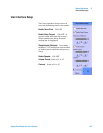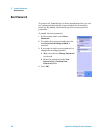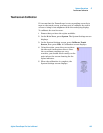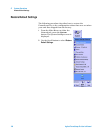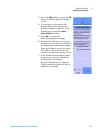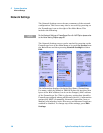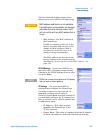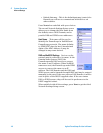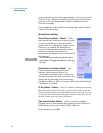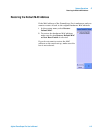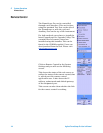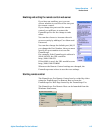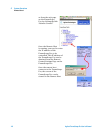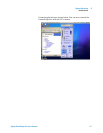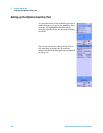
System Operations 4
Network Settings
Agilent FrameScope Pro User’s Manual 111
Network Connection Since network
hardware may function at a variety of
speeds and modes, the FrameScope has the
ability to auto-negotiate its speed and mode
when it is connected to the network. The
auto-negotiation attempts to configure the
devices for the fastest network connection
supported. If necessary, the user can
manually set the FrameScope for 10 ,100 or
1000 Mbps and full or half duplex mode
(For Gigabit, only full duplex mode is
available). This may be used for instance to
prove that a 10/100 switch can properly
support the 10 Mbps speed.User can also
select whether to use Fibre interface or
copper interface.
When satisfied with the settings, press Next
get the fourth Network Settings Setup
screen.
VLAN Support FrameScope Pro supports
C-VLAN (IEEE 802.1q) and P-VLAN (IEEE
802.1ad) tagging.
Enabling C-VLAN allows sending and
receiving of q-tagged frames. Set the
appropriate C-VLAN Identifier and C-VLAN
priority. These values are dependent on the
network under test's C-VLAN setting.
Q-tagging is normally used to group
different host traffic in enterprise networks
as if these hosts are on a single LAN even if
they are geographically separated from each
other.
Enabling P-VLAN allows sending and
receiving of ad-tagged frames (also know as
Stacked VLAN). Set the appropriate
P-VLAN Identifier and P-VLAN Priority.
These values are dependent on the network
under test's P-VLAN setting. AD-tagging is normally used in
service provider network to separate different client traffic. Set
a 4-hex digit value on P-VLAN TPID when testing on the service
provider network. This value will be used by FrameScope Pro
as the Tag Protocol ID (TPID) field to be inserted and stripped
when enabling P-VLAN support. This field indicates that the
packet is a P-VLAN packet in a service provider network. This
field is dependent on the P-VLAN settings of a service provider,



